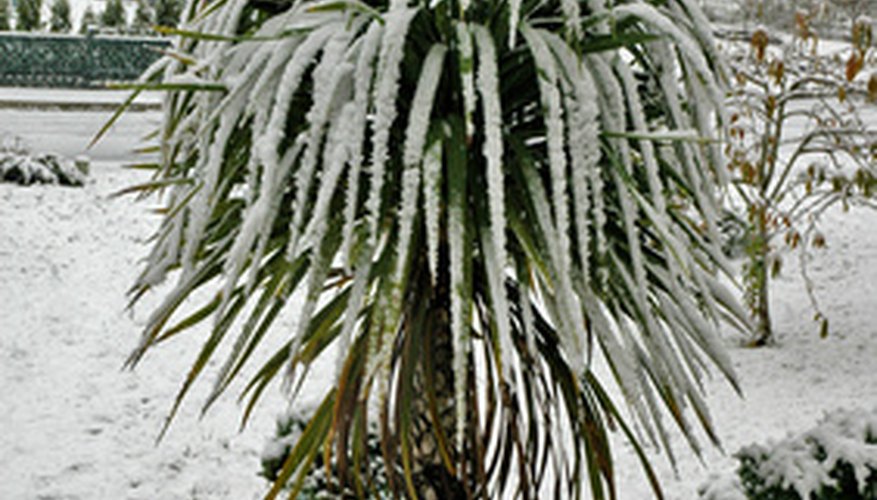Cordyline australis or cabbage palm is a semitropical palm that can get up to 30 feet tall but is usually only about 10 to 15 feet tall. There are several varieties; most are treelike, but a few are small ornamental specimens. The plant produces a white flower spire in spring and divides or splits on the stem that bears the bloom. In this manner the usually single-stemmed tree can become a multistemmed plant.
Cultivation and Growth
The cabbage palm forms white flowers in May and June. Usually only large mature plants will flower.The blooms will turn into small white berries with a thick black seed. Cordyline can easily be planted by seed but will require scarification on the seed to enhance germination. The plant likes well-drained soil in a sunny or partial shade location. Surprisingly, it can withstand temperatures down to about -10 degrees Celsius for short periods.
- The cabbage palm forms white flowers in May and June.
- Cordyline can easily be planted by seed but will require scarification on the seed to enhance germination.
Natural Splits
Cordyline australis naturally splits when it blooms. The mature stems that form flowers will split when the flower dies back. The plant forms extra branches this way. It will also form offshoots at the base when the trunk is damaged. These little plants can be divided from the main tree to plant alone or can be allowed to develop into extra branches. It is the mature tree that will form plantlets at the base. Young plants do not split or form offshoots.
- Cordyline australis naturally splits when it blooms.
- The mature stems that form flowers will split when the flower dies back.
Three for the Price of One
In a spectacular twist of nature, the Cordyline australis is not only easy to propagate from offshoots, seed or splits, but you can cut it into three pieces and root each one. This is best done on a young plant with a sharp saw. The base will re-sprout and the middle and top of the plant can be planted individually. Each piece will root and turn into a new plant.
- In a spectacular twist of nature, the Cordyline australis is not only easy to propagate from offshoots, seed or splits, but you can cut it into three pieces and root each one.
- The base will re-sprout and the middle and top of the plant can be planted individually.
Dividing a Cordyline
It is easy to divide or split a Cordyline australis. A sharp clean knife is necessary to sever the offshoot at the base of a tree. It can be planted in fertile soil and will root quickly. You can remove it at any time, but when the plant is dormant is the most appropriate period. The plant slows growth in periods of heavy drought and in winter. Very late winter to early spring is a good time for splitting a Cordyline. You can apply rooting hormone to the severed end if you wish to speed up rooting.
- It is easy to divide or split a Cordyline australis.
- You can remove it at any time, but when the plant is dormant is the most appropriate period.
